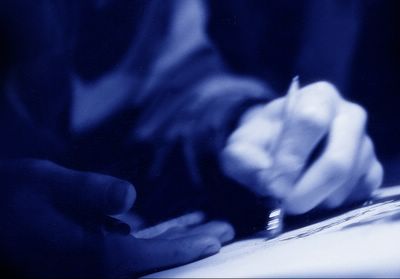TIFF 2010 Review: "Cave Of Forgotten Dreams"
(Reel to Real)
(2010, USA, 95 minutes)
Directed by: Werner Herzog
Filmmaker, documentarian, actor, and all-around bad-ass Werner Herzog has become something of a fixture of TIFF in the past decade, remaining more prolific than ever as he nears the end of his sixth decade but never failing to surprise with each successive endeavour. Whether it be the rousing straight-up thrills of "Rescue Dawn" (a shockingly un-ironic celebration of American might) or the polarizing double-whammy of last year's "My Son, My Son What Have You Done?" and the don't-call-it-a-sequel-sequel "Bad Lieutenant: Port Of New Orleans", an evening with Herzog will be something entirely unexpected and stimulating.
Although an eclectic and ambitious feature director, Herzog's most acclaimed and distinctive works are generally found in the documentary medium, where he has not been afraid to tamper with tidy notions of so-called "reality" in order to spin a good yarn and attempt to illuminate truths that are spiritual and intellectual over those merely factual (which is why, perhaps, he's yet to receive a single Oscar nomination from the Academy bluenoses).
His latest, making its world premiere at TIFF 2010, is Cave of Forgotten Dreams, and given its unique subject, there couldn't possibly have been a better marriage of artist and subject than Herzog and the discovery of the possible cradle of mankind's creation of visual narrative.
The anyone, filmmaker or otherwise, could enter the Chauvet cave at all is something of a miracle: approximately 20,000 years ago, a random rock slide shut off the entrance to a large cave set in the limestone cliffs above France's Ardèche River. It remained completely sealed up and untouched until 1994, when it was discovered, quite accidentally, by a trio of explorers (one of whom was Jean-Marie Chauvet, hence the name). Within, they discovered chambers adorned with Paleothic-era art, some abstract, some alarmingly figurative and sophisticated, chronicling species of animals extinct since the Ice Age. The government immediately declared the site off-limits to the public, many of whom will have their first, and likely only, encounter with this incredible spectacle via Herzog's 3D lens.
That's right: 3D. Herzog seized the opportunity to record his first and possibly only encounter with by recording it for posterity with the very fashionable extra dimension.
Because of near-toxic levels of radon and carbon dioxide that were trapped inside the hermetically-sealed cave like a snow globe, no one is allowed to stay in the cave for more than a few hours at a time. Herzog was allowed just two additional crew persons: a DOP and sound recordist. They brought in battery-operated equipment, which didn't emit heat. Six shooting days of four hour durations were granted, under the conditions that the trio remain, confined to a two-foot wide metal walkway.
Much of the art is believed to date to the Aurignacian, era (30,000 to 32,000 years ago). It is simply, breathtaking in any dimension: along the walls and stalactites can be seen dynamic, dramatic representations of lions, panthers, bears, rhinos and hyenas. The smudged depiction of a quartet of horses even suggests an attempt at motion blur. Spacial relationships between elements are enhanced by the recesses in the walls and odd angles, as if the artist(s) instinctively knew how to utilize the surfaces to create drama. There's evidence that the walls, in some cases, were scraped clear of debris and smoothed to create and a lighter "canvas" upon which to etch.
Some of the images suggest a shamanistic intention--the presence of a buxom fertility statue allows Herzog to make a Pamela Anderson joke.
But there's evidence of at least one previous visit to the cave during the Gravettian period (25,000 to 27,000 years ago): hauntingly, a child's footprints, amidst the remains of ancient hearths and carbon smoke stains from torches used to light the interior, and the red-stained handprint of a man with a crooked finger.
Herzog uses his camera to not only give the rest of us a chance to witness a unique spectacle that will likely be inaccessible to the public for quite some time, but also to allow scientists to see parts of the cave that were previously not viewable due to the delicacy of the terrain (early tours of the cave were cancelled when it was discovered that bacteria from people's breath was eroding the art). He has quite a bit of fun interviewing the eccentric panel of experts (offering an excuse to hoist a spear directly at the 3D lens), and as for the albino alligators--well, I won't spoil that one for you...
©2010 Robert J. Lewis




